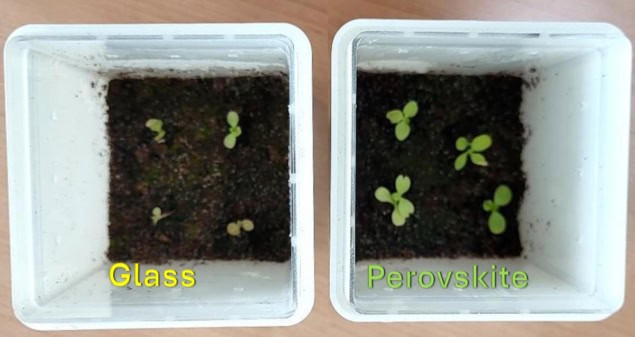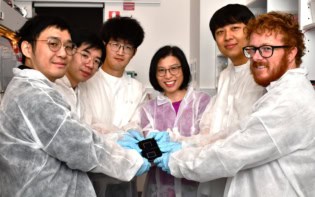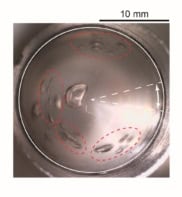
Agrivoltaics is an interdisciplinary research area that lies at the intersection of photovoltaics (PVs) and agriculture. Traditional PV systems used in agricultural settings are made from silicon materials and are opaque. The opaque nature of these solar cells can block sunlight reaching plants and hinder their growth. As such, there’s a need for advanced semi-transparent solar cells that can provide sufficient power but still enable plants to grow instead of casting a shadow over them.
In a recent study headed up at the Institute for Microelectronics and Microsystems (IMM) in Italy, Alessandra Alberti and colleagues investigated the potential of semi-transparent perovskite solar cells as coatings on the roof of a greenhouse housing radicchio seedlings.
Solar cell shading an issue for plant growth
Opaque solar cells are known to induce shade avoidance syndrome in plants. This can cause morphological adaptations, including changes in chlorophyll content and an increased leaf area, as well as a change in the metabolite profile of the plant. Lower UV exposure can also reduce polyphenol content – antioxidant and anti-inflammatory molecules that humans get from plants.
Addressing these issues requires the development of semi-transparent PV panels with high enough efficiencies to be commercially feasible. Some common panels that can be made thin enough to be semi-transparent include organic and dye-sensitized solar cells (DSSCs). While these have been used to provide power while growing tomatoes and lettuces, they typically only have a power conversion efficiency (PCE) of a few percent – a more efficient energy harvester is still required.
A semi-transparent perovskite solar cell greenhouse
Perovskite PVs are seen as the future of the solar cell industry and show a lot of promise in terms of PCE, even if they are not yet up to the level of silicon. However, perovskite PVs can also be made semi-transparent.

In this latest study, the researchers designed a laboratory-scale greenhouse using a semi-transparent europium (Eu)-enriched CsPbI3 perovskite-coated rooftop and investigated how radicchio seeds grew in the greenhouse for 15 days. They chose this Eu-enriched perovskite composition because CsPbI3 has superior thermal stability compared with other perovskites, making it ideal for long exposures to the Sun’s rays. The addition of Eu into the CsPbI3 structure improved the perovskite stability by minimizing the number of intrinsic defects and increasing the surface-to-volume ratio of perovskite grains.
Alongside this stability, this perovskite also has no volatile components that could potentially effuse under high surface temperatures. It also typically possesses a high PCE – the record for this composition is 21.15%, which is significantly higher and much more commercially feasible than previously possible with organic PVs and DSSCs. This perovskite, therefore, provides a good trade-off between the PCE that can be achieved while transmitting enough light to allow the seedlings to grow.
Low light conditions promote seedling growth
Even though the seedlings were exposed to lower light conditions than natural light, the team found that they grew more quickly, and with bigger leaves, than those under glass panels. This is attributed to the perovskite acting as a filter for only red light to pass through. And red light is known to improve the photosynthetic efficiency and light absorption capabilities of plants, as well as increase the levels of sucrose and hexose within the plant.
The researchers also found that seedlings grown under these conditions had different gene expression patterns compared with those grown under glass. These expression patterns were associated with environmental stress responses, growth regulation, metabolism and light perception, suggesting that the seedlings naturally adapted to different light conditions – although further research is needed to see whether these adaptations will improve the crop yield.

Roll-to-roll-fabricated hybrid perovskite solar cells reach record efficiencies
Overall, the use of perovskite PVs strikes a good balance between being able to provide enough power to cover the annual energy needs for irrigation, lighting and air conditioning, while still allowing the seedlings to grow – and grow much quicker and faster. The team suggest that the perovskite solar cells could help with indoor food production operations in the agricultural sector as a potentially affordable solution, although more work now needs to be done on much larger scales to test the technology’s commercial feasibility.
The research is published in Nature Communications.



